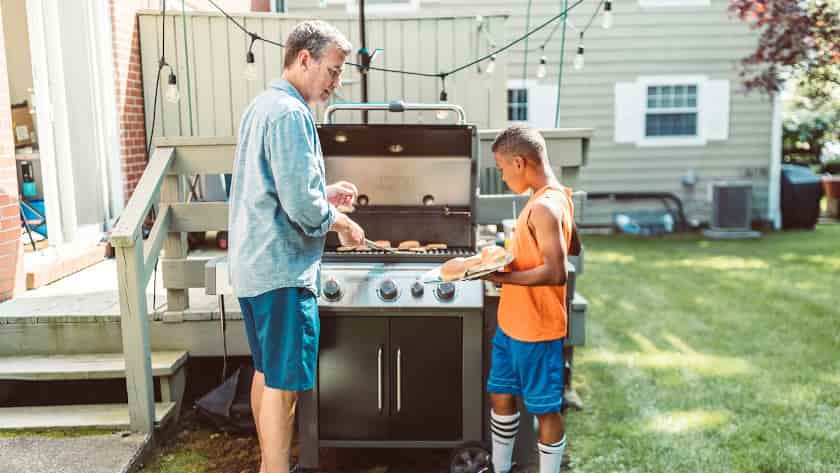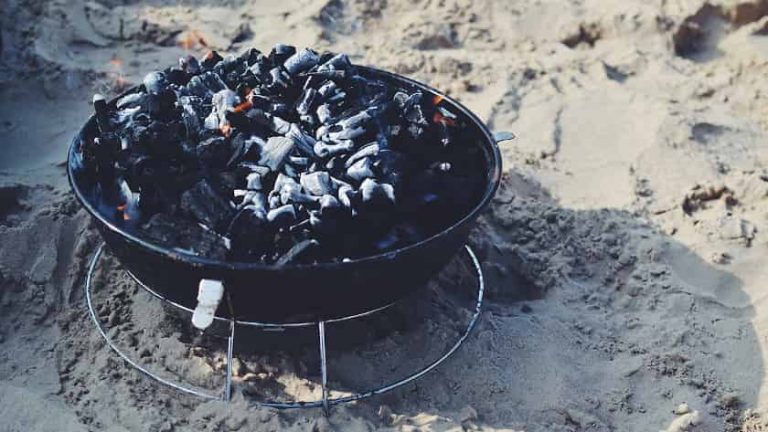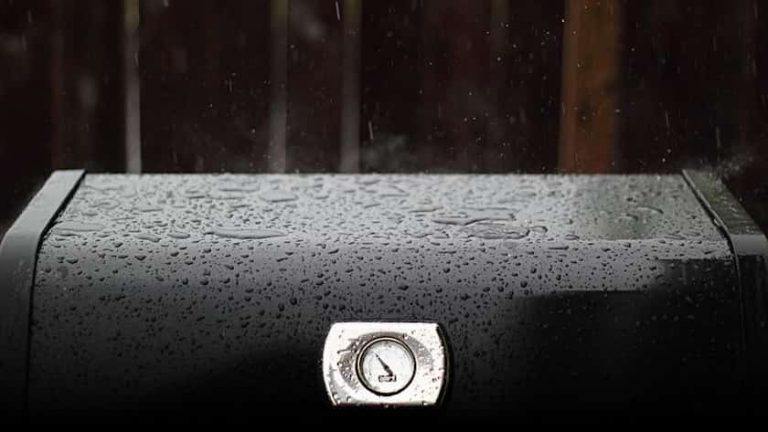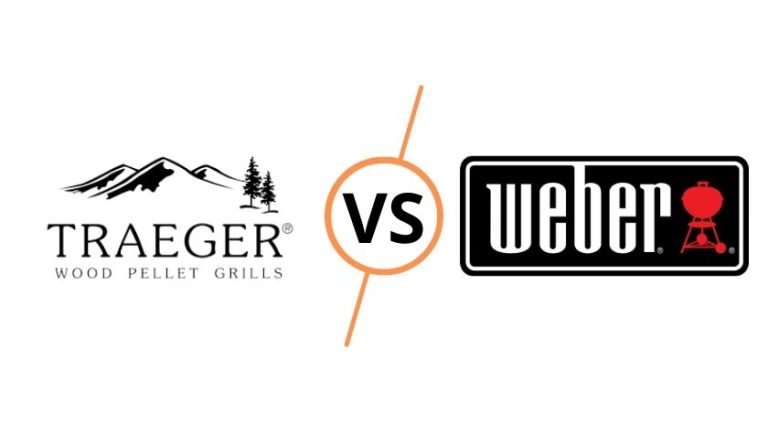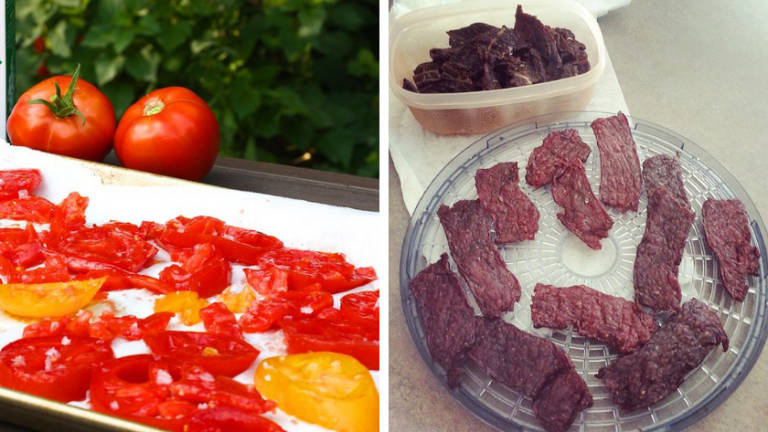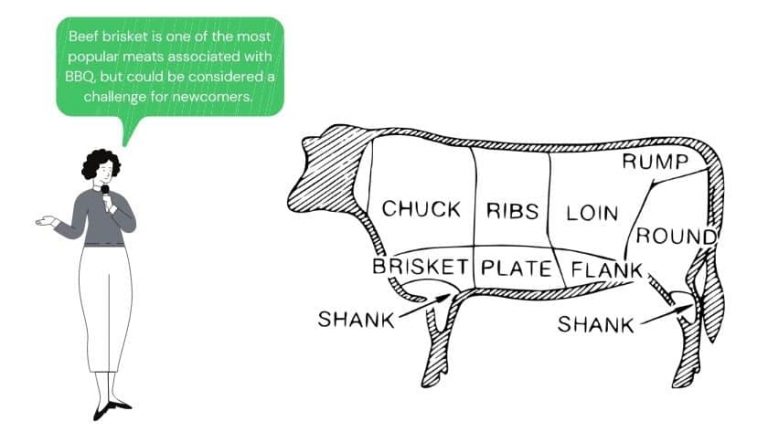How Far Away From a Fence Should a Grill be?
One of the questions that come to your mind when grilling outside your house is how far your grill should be from your fence. This may depend on several factors, including outside temperature, grill material, and grill type.
It may also depend on wind speed. Barbecues should not be too close to fences or buildings, to avoid accidental fires. Here we will talk about how far should your grill be from the fence?
We’ll also share some safety measures to help you set up your outdoor barbecue.
Why it is important to grill at a Safe Distance
The main reason you need a harmless distance from your fence whenever you are grilling is that grills need sufficient air space to ventilate properly.
Remember, without proper ventilation, smoke and gases like carbon monoxide can accumulate to dangerous levels, which can make people have health issues.
Besides serving as preventative fire safety measures, grilling at a safe distance also protects from other types of damage. Another big risk is grill fires, where the natural heat from the BBQ can cause damage to your home.
The heat produced from grilling may not appear as a threat while the lid is closed, but the truth is quite the opposite.
Whether open or closed, the heat from a grill can reach temperatures high enough to melt, loosen, or cause ripples in vinyl siding commonly used on homes and modern buildings.
Siding is not always cheap to replace, and when not replaced quickly, structural damage can occur from exposure to the elements. Similarly as smoke escapes from the vents on the grill’s lid, smoke damage will occur if there is not enough distance from a structure.
With enough space between the grill and surrounding buildings, the released smoke will have plenty of room to dissipate, reducing the potential for smoke damage and gas, carbon, and monoxide buildup.

How Far Should The Grill Be From The House?
It is commended that the grill is no less than 3 feet far away from a fence, house, or any other building. No matter what kind of grill which you have, make sure it’s 3 feet away from fence before you put it outdoors.
A lot of people don’t take this into account.
Grill manufacturers usually recommend keeping grills at least three feet from a home. While this does provide some distance, it may not be enough to prevent heat, smoke, and fire damage.
A better approach and more common recommendation are to maintain at least ten to twenty feet of distance from the home to the grill.
The more significant space offers increased ventilation and protection from smoke and heat damage and reduces the risk of a home fire from jumping flames or unattended grilling times.
Homeowner’s insurance plans may have outdoor grilling specifications, stipulations, or directions on what will or won’t be covered should any damage or fires start from outdoor grilling.
Where Should You Not Put A BBQ?
Make sure your BBQ is not directly outside the house when the kids run out or into the house.
According to this guide, grill in a clean, flat place away from any potentially combustible waste such as mulch and litter boxes. In addition to this, trees and hedges must be built at low elevations.
Even with a protective cover, the grill should not be left open, as wind conditions can create a risk of stray sparks, especially when you are near railings and walls.
Most important, never ever leave a Lit Grill Unattended specially when you have kids and pets playing around. You never know what may go wrong, keep your kids at safe distance.
Ask them to maintain at least 3 feet distance from the grill. Let them take part in the grilling process but always maintain safety and supervision. Once done don’t forget to properly turn off your grill!
Barbecuing is also dangerous at night when it is windy because of the trees hanging from the desk. Also, never grill directly under a tree with dead, rotting, or weak branches.
A gust of wind can cause the BBQ or grill to collapse. You should never leave a grill with an open flame unattended.
Where to Place Grill Outside?
The location of your grill is vital to the quality and safety of the food being prepared.
It is essential to find a flat, level, and non-flammable surface that is far enough away from plants, fences, walls, and other structures that could potentially catch on fire or be affected by the heat being produced from the grill.
If available, grilling in a shaded area is ideal during the summer months to protect the grill master from the heat and sunshine, but pay attention to any low overhead branches or ceilings that are potential fire hazards.
Avoid placing the grill directly on any grass, especially dry grass.
Instead, build a grilling platform with a cement or non-flammable slab that offers a stable area to keep the grill lifted and secure while preventing fires from dropped charcoals or fat drippings.
Monitor flame height, grilling temperatures, grease drippings, and immediate surroundings while grilling in a grassy area to ensure the grass does not ignite and start a fire.
Keep grills no less than five feet away from buildings, structures, and plants.
Ten to twenty feet is the ideal distance to keep a grill from homes and other facilities to maintain the minimum risk of fires when the space is there.
Also, rethink grilling in carports or garages since these areas are typically enclosed with lower hanging roofs that can trap smoke and are susceptible to fire.
Ventilated areas are necessary when using propane or natural gas. Installing above-grill hoods will work for adequate ventilation if a grill is used in an outdoor kitchen or covered build-in setup.
If a power source is needed, double-check to ensure the extension cord or power cord being used is outdoor rated.
Here are some things to consider creating up your grill.
Line of Vision
One thing to consider when lighting the grill is the line of sight. People inside the house must be able to see the grill through open windows and doors.
This should also happen when used outdoors. You should have a clear idea of what’s going on around you. Make sure there are no trees or walls blocking your view around the BBQ area.
Check Your Surroundings
Make sure to check your surroundings before lighting the grill. Always keep a harmless distance between any structure and the grilling safety.
Never place the BBQ directly on the back door as this could cause an accident with the kids running around. Keep away from any combustible items, such as low-lying trees and hedges.
Consider the Wind
You should look at which direction the wind blows. Remember that smoke is a portion of the BBQ experience. It can cause some issues when it catches in your hair or clothes.
Even works when it gets in your eyes and lungs.
Therefore, ensure that the wind does not direct the smoke to areas where guests are. Remember that fumes have dangerous gases such as carbon monoxide which can cause some health problems.
Consider the Shade and Heat
Many people consider having a barbecue party in the summer when there is sun and there is warm weather. Standing near a hot grill can be uncomfortable when it is hot.
You can put the grill in the shade when it is hot as trees as they provide good ventilation and natural shade. But make sure there are no low-hanging branches, as they can pose a fire hazard.
Never Place a Grill on Grass
You should not place your grill in places that have grass. This is because the grass is a fire hazard and catches fire quickly. Any tat dripping from the meat into dry grass can cause a serious fire.
On top of that, the high heat from the BBQ can damage the grass. Although most artificial grass won’t burn, it’s recommended to avoid exposing it to open frames.
They also melt when it is exposed to high heat. You can discuss the fire rating of grass with your manufacturer.
Is it permissible to grill in the garage?
Grilling outdoor is an enjoyable and fun way as you relax chatting with your family and friends on a warm day. Nevertheless, it is essential to consider your safety.
Ensure that you place your BBQ at a safe distance from structures and fences.
Many store their grill in garage during off-season but need to be put back outside at proper distance from walls, fens and structures. In addition to that, when you are storing the grill, make sure that the cover and the grill are dry to prevent any rust from developing during winter.
As for the grill to use in garage. Grills that are approved for indoor use are the only grills you can use in your garage. Keep in mind that propane grills, charcoal grills, and smokers may be flammable fuel sources.
Some people think that opening the garage door to grill food is a perfect idea, but it’s not.
Related Post To Consider
Can You Leave Thermometer in Meat While Smoking?
15 Best Traeger Grill Recipes That Anyone Can Master
